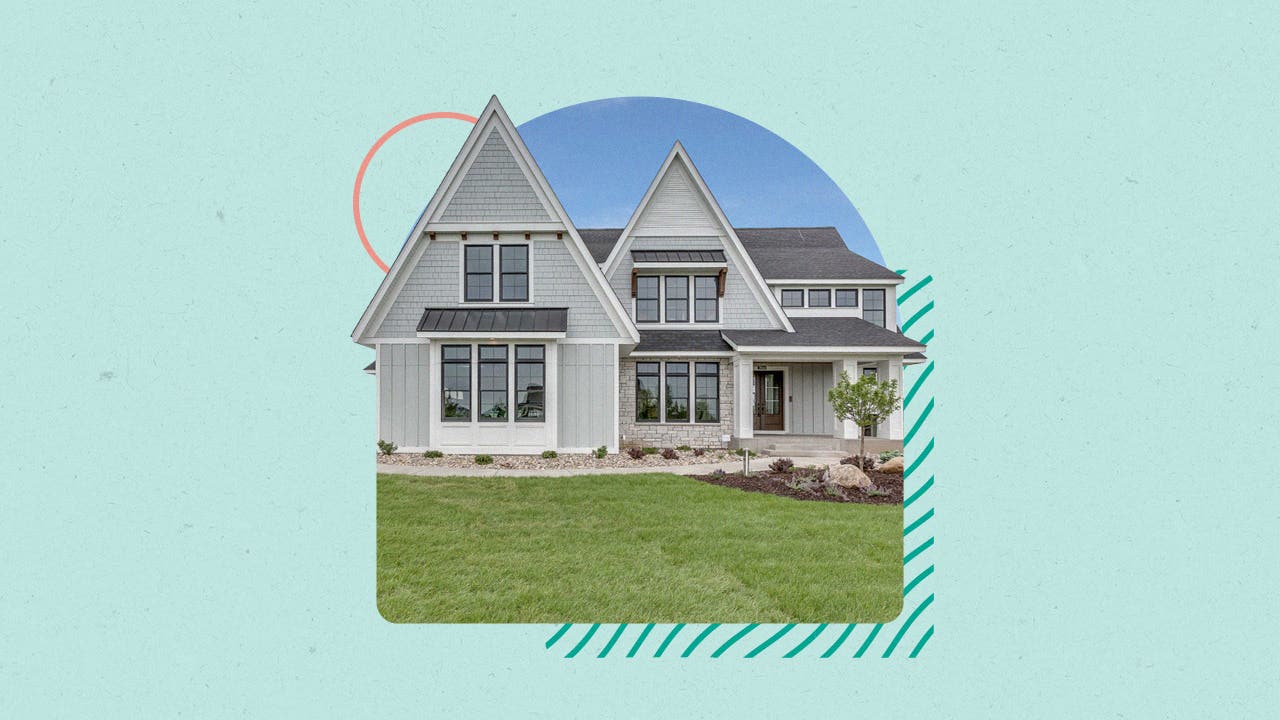What is mortgage insurance?

The Bankrate promise
At Bankrate we strive to help you make smarter financial decisions. While we adhere to strict , this post may contain references to products from our partners. Here's an explanation for .
Key takeaways
- Mortgage insurance is a fee you pay to your lender to cover risks associated with funding your loan.
- Different loan types have different kinds of mortgage insurance. Conventional mortgages have private mortgage insurance (PMI), and FHA loans have mortgage insurance premiums (MIP), for instance.
- Not all loans require mortgage insurance. For example, you can avoid mortgage insurance with a conventional loan by making a down payment of 20 percent or more.
When you buy a home, you probably expect to shop around for the best mortgage rates, take out a mortgage and make a down payment. But there’s another step you might need to take. If your down payment is less than 20 percent of your home’s purchase price or you’re taking out a particular mortgage (such as an FHA loan), you might also need to buy mortgage insurance. Here’s what to know.
What is mortgage insurance?
Mortgage insurance is an insurance policy that protects the mortgage lender, but the borrower is the one who pays for it. With mortgage insurance, the lender or titleholder is covered in case you are unable to pay back the mortgage.
How does mortgage insurance work?
How mortgage insurance works differs between types of mortgages. With a conventional mortgage, you’ll need to pay for mortgage loan insurance if you put down less than 20 percent on a home purchase. This is because you have less invested in the home upfront, so the lender has taken on more risk in giving you a mortgage. You’ll pay mortgage insurance as a monthly fee in your mortgage payment. You can request to cancel it once you have 20 percent equity. It will be automatically canceled once you’ve paid off 22 percent of the original value of the home.
With an FHA loan, everyone pays mortgage insurance no matter the size of the down payment. It comes in two forms: upfront MIP and annual MIP (more on each below). If you make a down payment of less than 10 percent, you’ll pay annual MIP for the life of the loan. If you put down 10 percent or more, you’ll pay annual MIP for 11 years, or until you refinance or sell.
Even with mortgage insurance, you’re still responsible for the loan. If you fall behind on or stop making payments, you could lose your home to foreclosure. The mortgage insurance policy only protects your lender, not you.
Types of mortgage insurance and other fees
The type of mortgage insurance you’ll need depends on many factors, including the kind of loan you have. Since mortgage insurance protects the lender, your lender chooses the insurer that provides the policy.
The various types of insurance on a mortgage include:
- Private mortgage insurance (PMI): Required for a conventional loan with less than 20 percent down. This fee is typically rolled in with your monthly payment.
- FHA mortgage insurance premium (MIP): MIP is paid upfront at closing, and annually, depending on your down payment size.
- USDA guarantee fee: Similar to mortgage insurance, the USDA guarantee fee is a cost added to obtain a USDA loan.
- VA funding fee: VA loans don’t require mortgage insurance or a down payment for those who qualify. However, you’ll need to pay a funding fee at closing if you don’t roll it into your loan balance.
How much does mortgage insurance cost?
The cost of insurance on a mortgage varies depending on various factors, such as:
- The type of mortgage
- The loan size
- The loan term
- Your initial down payment
- Your credit score
Let’s break it down by loan type:
- Conventional loan: The cost of PMI can vary widely depending on several factors. On an annual basis, the average cost ranges from 0.46 percent to 1.5 percent of the loan amount, according to a March 2024 analysis by the Urban Institute. For a $400,000 loan, that translates to an average of $153 to $500 a month.
- FHA loan: FHA loans require an upfront MIP and annual MIP. The upfront MIP is 1.75 percent of the loan amount. For a $400,000 loan, that translates to a $7,000 fee at closing. The annual premium ranges between 0.45 percent and 1.05 percent, or $1,800 to $4,200 for that $400,000 loan.
- USDA loan: USDA loans come with an upfront guarantee fee of up to 3.5 percent of your loan amount, as well as an annual fee that can be up to 0.5 percent of your loan amount. Using the $400,000 loan example, that would come out to a maximum of $14,000 upfront and $2,000 annually.
- VA loan: The VA loan funding fee ranges from 1.25 percent to 3.3 percent. How much it is depends on your down payment amount and if you’ve taken out a VA loan before. That comes out to $5,000 to $13,200 for a $400,000 loan.
Pros and cons of mortgage insurance
It’s pretty clear how this coverage benefits the lender, but how does mortgage insurance work for the borrower? Here are the main pros and cons for you as the borrower.

Pros of mortgage insurance
- Don't need to put 20 percent down to get a mortgage
- Start building equity sooner
- More money to spend on other things, like furniture or appliances, instead of putting it toward a larger down payment

Cons of mortgage insurance
- Extra expense to pay
- Can be hard or impossible to cancel, depending on the loan type
- Protects the lender, not you
Mortgage insurance FAQ
-
Whether mortgage insurance is required depends on the mortgage type and your down payment. For a conventional loan, you’ll pay mortgage insurance if you put less than 20 percent down. For an FHA loan, all borrowers pay mortgage insurance premiums, but how long you’ll pay annual premiums depends on your down payment size. VA and USDA loans do not have mortgage insurance but instead have separate fees.
-
You can get rid of mortgage insurance in many ways, including paying down your loan, refinancing or requesting cancellation when you reach 20 percent equity in your home. Keep in mind: If you have an FHA loan and you put down less than 10 percent, you can’t get rid of the insurance unless you refinance to a different type of loan.
-
No. The itemized deduction for this cost has expired. Unless legislation renews it, you won’t be able to claim a tax perk for mortgage insurance premiums.
-
Mortgage insurance protects the lender if you stop paying your mortgage. Homeowners insurance protects you if you experience a covered loss (e.g., your house burns down in a fire).
-
You can’t simply stop paying for the insurance policy, even if you’ve reached your loan type’s required equity for cancellation. Instead, you first need to work with your lender to get the mortgage insurance policy canceled and that cost removed from your monthly payments. However, by law, lenders must cancel PMI on conventional loans when you’ve reached a 78 percent LTV ratio.
-
A piggyback mortgage or piggyback loan involves getting a second smaller mortgage at the same time you take out your primary mortgage. The breakdown is typically 80/10/10. This means you’ll get a mortgage for 80 percent of the home’s value and a smaller second mortgage for 10 percent. You’ll use the smaller loan amount for your down payment. Finally, you’ll provide a down payment of 10 percent. This will allow you to put 20 percent down on the home and avoid paying for mortgage insurance.
While a piggyback mortgage could save you money, it might not be worth it. You may end up paying a lot more than expected when you calculate loan fees and interest.
Related Articles




Mortgage insurance vs homeowners insurance: what’s the difference?